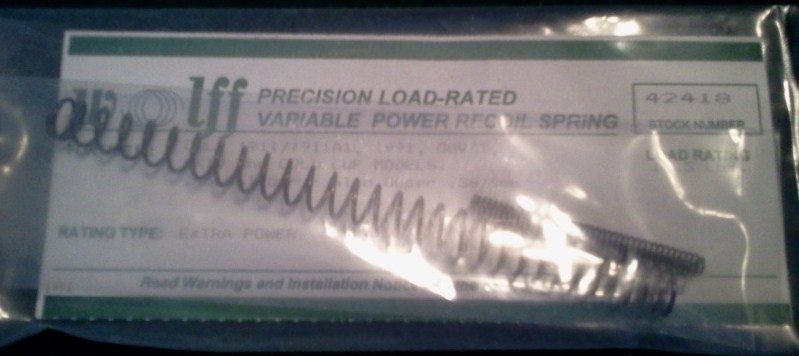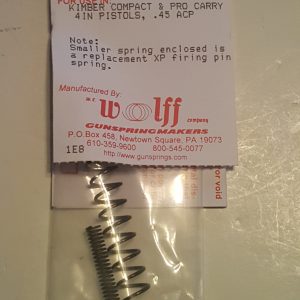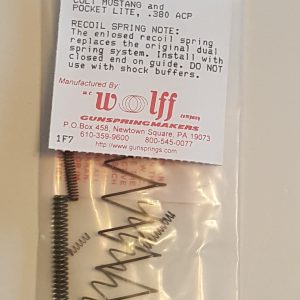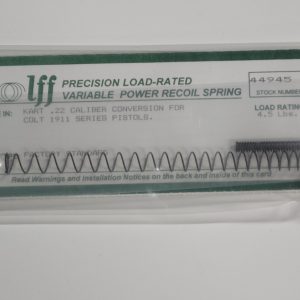Description
1. What is the difference between conventional and variable recoil springs?
The difference is both physical and operational. With a conventional spring, all the coils are spaced equally apart, except for the closed ends. In a variable recoil spring the space varies between coils with less space between coils at one end and more space between coils at the other end.
The way the two springs store energy is also different. For example if a conventional recoil spring is compressed 1/2″, it might store 1 pound of energy. For every additional 1/2″ this spring is compressed it would then store 1 additional pound of energy. When a variable recoil spring is compressed 1/2″, it might store 1/4 pound of energy. The next half inch of compression might store 1/2 pound, the next half inch might store 3/4 pound and so on. In other words, a conventional spring stores energy on a straight line and a variable spring stores energy on a curve. If both springs are rated at 16 pounds, they will both store 16 pounds when compressed to the same working length, but the way they get to 16 pounds is different.
2. Should I use a conventional or variable spring when both are available?
The choice is often very subjective. Conventional recoil springs are particularly beneficial when shooting heavier loads where keeping the slide closed as long as possible is desired. Variable recoil springs reduce the battery load values with increasingly greater recoil load values. This results in easier unlocking, improved recoil energy storage, dampening, feeding, breaching and lockup. Variable recoil springs are particularly beneficial with compensated pistols and when using light target loads where less recoil energy is available. The “correct type” of recoil spring is best determined through experimentation and your own personal preference.











